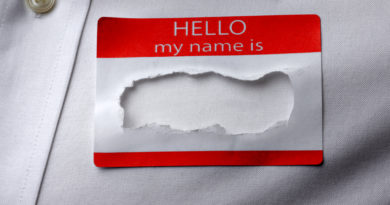What to Do After a Loved One Dies

The death of someone we love plunges us into a maelstrom of grief that clouds the mind and often makes it difficult to think clearly. This is particularly true for the person responsible for reporting the death to others, planning the funeral and/or interment services, and handling the myriad of necessary decisions that arise. This article offers a checklist of the tasks and responsibilities survivors should handle after a loved one dies, both immediately and in the following days/weeks.
What to Do Immediately
• Contact law-enforcement or medical personnel. You need to call the police/911 if your loved one died at home. If he or she died at home but was receiving hospice care, then contact the hospice agency. If he or she died in a caregiving facility, such as a hospital, nursing home or hospice, then onsite healthcare personnel will make the official pronouncement of death.
• Determine if the deceased wished to donate his/her organs. If your loved one died at home and you do not know whether he/she wished to donate his/her organs or tissue, then you should check the deceased’s driver’s license, will or advance healthcare directive. Time is of the essence here because any needed organs/tissue must be gathered as soon as possible after death.
• Contact a funeral/interment provider. If you and the deceased loved one did not choose a funeral and/or interment provider ahead of time, then you will need to select and contact one. Typically, families choose a local funeral home or a firm that previously served the family, unless some non-traditional form of body disposition is desired, such as direct-cremation, immediate burial, body donation, a home funeral, etc.
• Notify immediate family, key relatives and friends. As time allows, you should begin contacting other members of your immediate family, as well as close relatives and friends, and inform them of the death. While doing so, and where appropriate, you should ask them for help contacting others (see next entry).
• Activate your “phone tree.” You do not personally need to inform everyone about the death if you do not feel up to it. Instead, ask members of your immediate family, key relatives and/or friends to help you spread the word to others, as appropriate. Ask them to contact specific individuals, however, and, if needed, provide that contact information for them. To help you keep track, review an address book or the contacts on your mobile phone and make a list to ensure you do not overlook someone.
• Arrange for pet- and/or childcare. If the deceased had a pet and/or young child, or if you bear these responsibilities, then consider asking a trusted relative, friend or neighbor to take over these duties temporarily if you do not feel you can handle them right now. Such arrangements will prove convenient whenever you will be away from home during the next several days.
• Locate important documents. You will need various legal documents following the death of a loved one. If not already available in a known place, you should gather the following (if applicable): the deceased’s will; advance healthcare directive, healthcare proxy and/or do-not-resuscitate order; Social Security card/information; military discharge papers (typically a “DD-214” form, also known as the “Certificate of Release or Discharge from Active Duty”); organ/tissue donation authorization; life-insurance and/or a funeral prearrangement contract.
What to Do in the Following Weeks/Months
• Secure property and belongings. If your loved one lived alone, ask a trusted family member or friend to visit the deceased’s home as soon as feasible to ensure his or her property and belongings are secure (unless you feel up to handling this yourself). Short-term, this includes locking doors/windows; collecting the mail/newspapers; watering plants; moving the deceased’s vehicle if parked in a public space; checking his/her voicemail for important messages; removing any food or beverages from the refrigerator that could spoil; and notifying the landlord of the death, among other things. In many areas, the local law-enforcement agency will also keep an eye on a vacant property following a death if you contact them via a non-emergency telephone number.
• Notify the deceased’s employer. If the deceased still worked, whether full- or part-time or even as a volunteer somewhere, contact his or her company as soon as practicable (assuming you didn’t already contact a close work-friend of the deceased and ask him or her to do so). This helps the employer not only adjust work schedules, if needed, but also begin processing the necessary paperwork concerning payroll, benefits, Social Security, retirement accounts, etc. In addition, ask the employer if the deceased was covered by a company life-insurance policy and if any employee benefits, such as health insurance, will still cover dependents.
• Arrange funeral and/or interment services. If you chose to work with a funeral home, then a funeral director will guide you through the process of planning a funeral or memorial service for your loved one, as well as the interment process. If you selected direct-cremation, immediate burial or some other form of final body disposition, then the provider’s staff will assist you in making the necessary arrangements. If you selected cremation for final body disposition, then you can arrange a memorial service at a later date unless you desire to perform the committal right away. If you and your loved one discussed his or her wishes beforehand, or formally prearranged these services with a provider, then many of these decisions will already have been made.
• Write obituary/death notice and eulogy. After arranging the funeral services, members of the immediate family must often write an obituary or death notice (basically an abbreviated obit) for publication, or approve something written by a funeral director. Newspapers generally charge a fee to publish an obituary or death notice – a cost that will be passed on to the family. You should decide if you wish to publish an obituary/death notice, or if you prefer to communicate the death/service details some other way, such as via social media. In addition, if the service you arranged includes a eulogy, then either you or someone you designate should begin writing and practicing it.
• Create a memory board. Families often create a “memory board” for the funeral/memorial service of a loved one these days. If you want to include one in the service you arranged, then you will need to select photographs depicting the life of the deceased, such as childhood and school images, graduations and vacations, formal sittings or candid shots, etc., in order to convey the memorable times he or she experienced.
• Continue notifying others of the death/arrangements. Once you finalize the funeral/interment arrangements, you should continue informing others about the death who were not initially contacted, including the deceased’s doctor, attorney and/or accountant, as well as any fraternal, professional or membership organizations. In addition, you (or someone you designate) should begin contacting family members, friends and others about the service details (date, time, location, etc.), as well as where to send flowers and/or charitable donations. Your funeral/interment provider will typically post this information on their website, but you should definitely consider posting the details and/or a link on your social-media account(s), too.
• Forward the deceased’s mail. As soon as feasible, you should forward your loved one’s mail/packages to a new address if he/she lived alone. Not only does this prevent uncollected deliveries from signaling that the home is now empty, but it will also make it easier to determine what bank accounts, credit cards, magazine subscriptions, etc., the deceased held that need to be dealt with later. Visit the United States Postal Service’s “Mail Addressed to the Deceased” page, or your local post office, for more information.
• Express thanks to well-wishers. People appreciate receiving an acknowledgement of the flowers, cards and/or donations made in memory of the deceased. After the funeral and/or interment, and only when you feel up to it, send a handwritten note or phone those family members, friends and acquaintances to thank them for their support and kindness. (It is perfectly acceptable to delegate this task to another family member or friend, if you’d like.)
• Settle the deceased’s financial matters. If your loved one left a will, then the designated executor(s) or administrator will usually settle the deceased’s estate. This includes, among many things, terminating health, life, automobile and other insurance policies; notifying Social Security, Medicare, Veterans Affairs, etc.; closing bank, pension and retirement accounts; paying off and closing a mortgage, credit cards and other forms of credit; and contacting a tax preparer to file a final return for the individual and his/her estate. Key to this process is obtaining certified copies of the deceased’s death certificate, which generally cost $15 to $20 each. If you must settle your loved one’s estate, there are many excellent resources available in print or online to guide you through the process.
• Handle often-overlooked matters. In this age of identity theft, it is important to deal with accounts that might be forgotten or not handled during the probate process. This can include: canceling/transforming social-media accounts, such as Facebook, Twitter, Instagram, etc.; notifying credit-reporting agencies (Equifax, Experian and TransUnion) about the death; closing the deceased’s email and website accounts; canceling his or her driver’s license; and notifying the local election board to remove his/her name from the list of registered voters. In addition, you should contact the Direct Marketing Association to add your loved one’s name to its do-not-contact list.
• Select a headstone or gravemarker. If the deceased was buried, you will need to select and purchase a headstone or gravemarker. Generally, you will not need to perform this task for many months, or even up to a year, after the burial to allow the ground around the gravesite to settle or if weather conditions make installation of the marker difficult. The cemetery that performed the burial can assist you in this process, but you are free to select another provider if you prefer. If you do, make certain to check with the cemetery concerning its rules and regulations concerning size, style, materials and installation before ordering.







